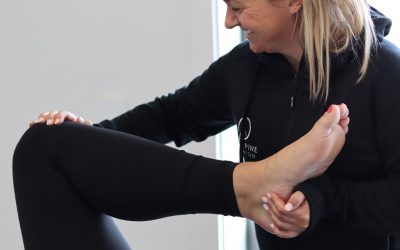When dealing with acute injuries, immediate and effective management is crucial to facilitate recovery and prevent long-term damage. Traditionally, the R.I.C.E. (Rest, Ice, Compression, Elevation) method has been the standard approach. However, an emerging alternative—the PEACE and LOVE protocol—offers a modern, comprehensive framework for injury management. This approach not only addresses the physical aspects of healing but also considers psychological and emotional well-being. Let’s delve into how the PEACE and LOVE protocol can enhance acute injury management.
PEACE Protocol for Acute Injury Management
The PEACE protocol stands for Protection, Elevation, Avoidance of anti-inflammatories, Compression, and Education. Here’s how each component contributes to effective injury management:
- Protection: Immediately after an injury, protecting the affected area is vital to prevent further damage. This involves using braces, splints, or other supportive devices to immobilise the injury. Protection helps limit movement and reduces the risk of aggravating the injury.
- Elevation: Elevating the injured area helps reduce swelling by encouraging fluid drainage away from the affected site. Keeping the injured limb elevated above heart level whenever possible can significantly decrease swelling and pain.
- Avoidance of Anti-inflammatories: Unlike traditional practices that advocate for the use of anti-inflammatory medications, the PEACE protocol suggests avoiding them initially. While anti-inflammatories can reduce pain and swelling, they may also impede the natural healing process by interfering with inflammation, which is a crucial part of tissue repair. Instead, focus on managing pain through other means, such as gentle movement and paracetamol.
- Compression: Applying compression helps control swelling and supports the injured area. Use tubigrip or compression wraps, ensuring they are snug but not overly tight to avoid compromising circulation. Proper compression reduces fluid accumulation and provides stability to the injured site.
- Education: Understanding your injury and the recovery process is essential. Education involves learning about the nature of the injury, appropriate self-care techniques, and when to seek further medical help. Knowledge empowers individuals to make informed decisions about their treatment and recovery.
LOVE Protocol for Acute Injury Management
The LOVE protocol complements the PEACE approach by addressing the aspects of Load, Optimisation, Vascularisation, and Exercise. Here’s how each component contributes to effective injury management:
- Load: Gradually introducing load or weight-bearing activities is essential for promoting healing and rebuilding strength. After the initial protective phase, gradually increasing the load on the injured area helps to stimulate tissue repair and prevent stiffness. However, it’s important to do this under guidance to avoid overloading the injury.
- Optimisation: Optimisation involves optimising the overall recovery process. This includes ensuring that the injury management plan is tailored to the specific needs of the individual, incorporating a balanced diet, and maintaining a healthy lifestyle to support the healing process. Optimisation also means adapting treatment plans as needed based on progress and recovery.
- Vascularisation: Promoting blood flow to the injured area is crucial for healing. Techniques such as gentle movement and specific exercises can enhance vascularisation, which supports the delivery of essential nutrients and oxygen to the injured tissues. Improved circulation can accelerate recovery and reduce the risk of complications.
- Exercise: Once the initial phase of recovery has passed, incorporating specific exercises is vital for restoring function and strength. A well-designed rehabilitation program that includes stretching, strengthening, and functional exercises helps in regaining full mobility and preventing future injuries. Exercise should be introduced progressively to match the recovery stage and individual capabilities.
Integrating PEACE and LOVE into Injury Management
Combining the PEACE and LOVE protocols offers a comprehensive approach to acute injury management. Start with the physical care outlined in the PEACE protocol—protect, elevate, avoid anti-inflammatories, compress, and educate yourself about the injury. Complement this with the progressive and supportive strategies from the LOVE protocol—manage load, optimise recovery, enhance vascularisation, and engage in targeted exercise.
By addressing both the immediate physical needs and the longer-term recovery process, the PEACE and LOVE protocols ensure a balanced and effective approach to injury management. This method not only facilitates optimal recovery but also supports overall well-being, setting the stage for a full and speedy return to activity.




0 Comments